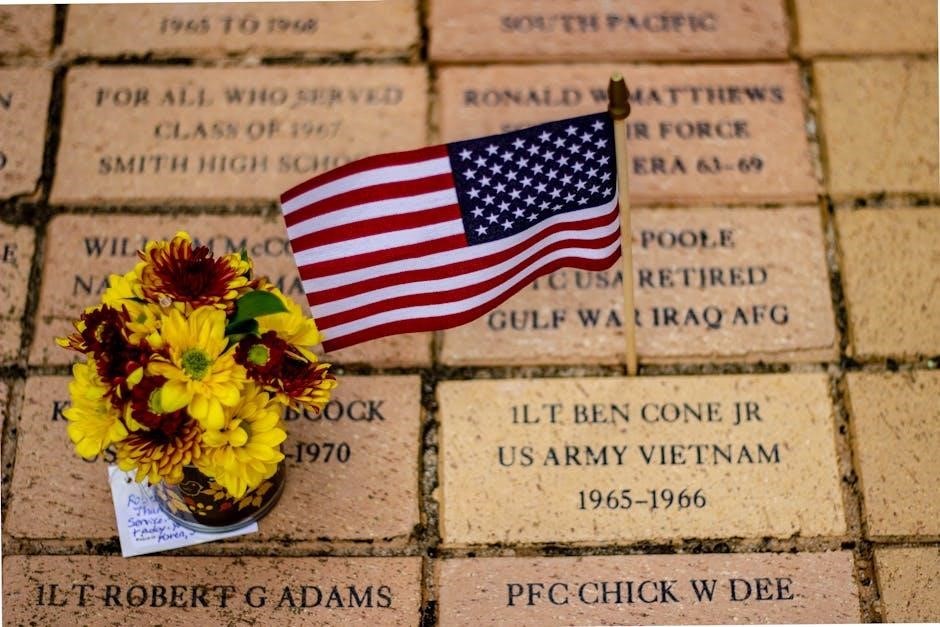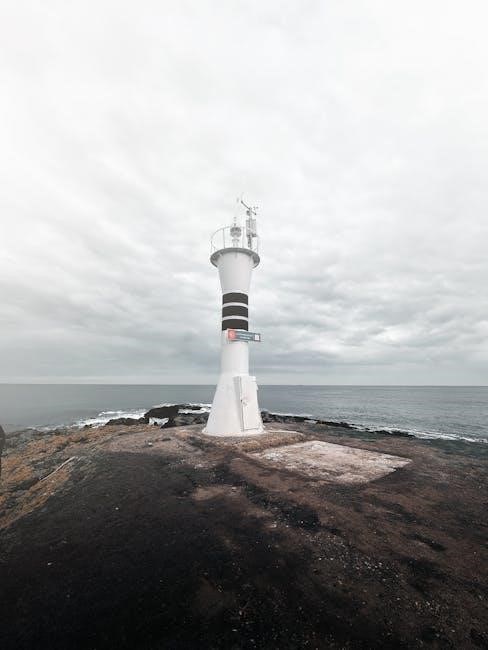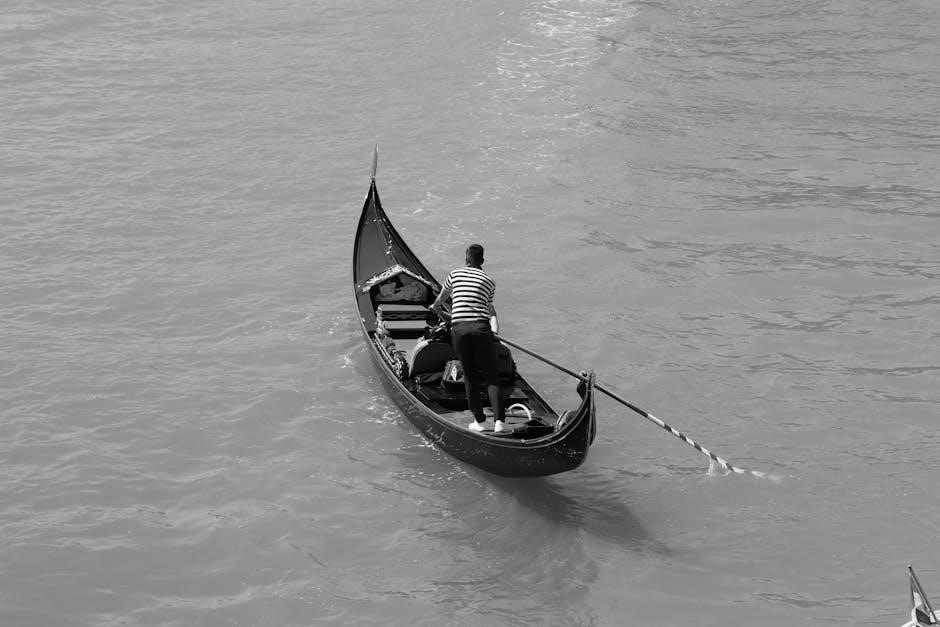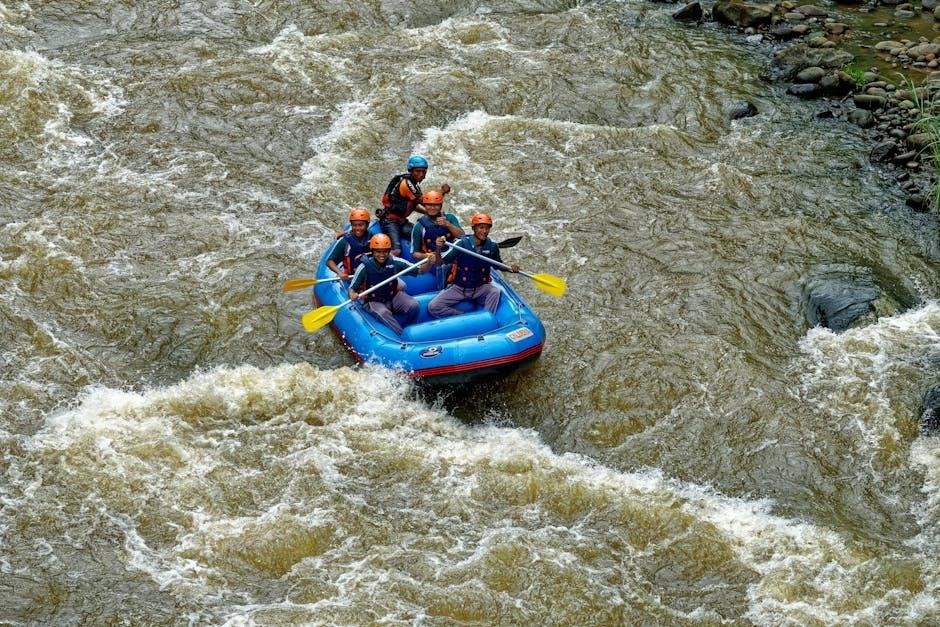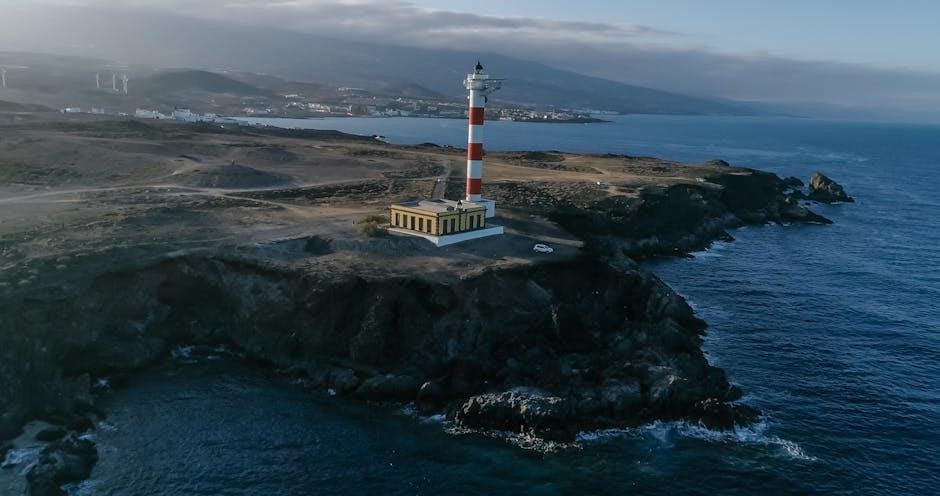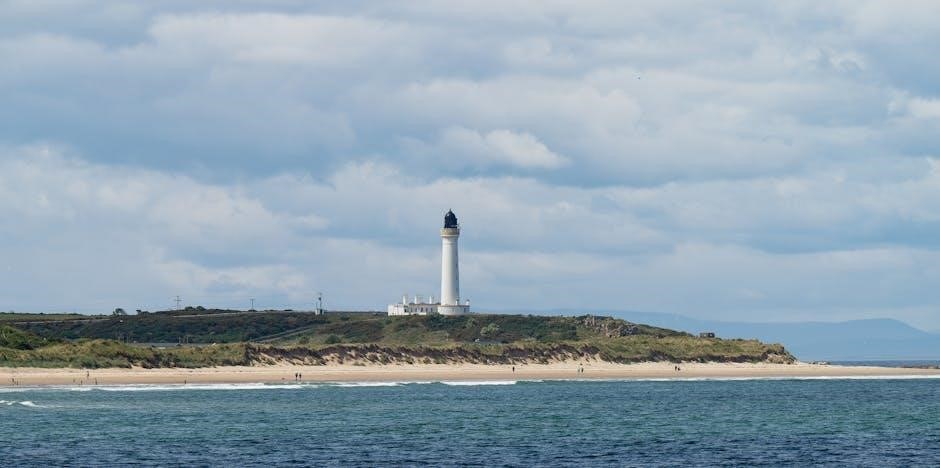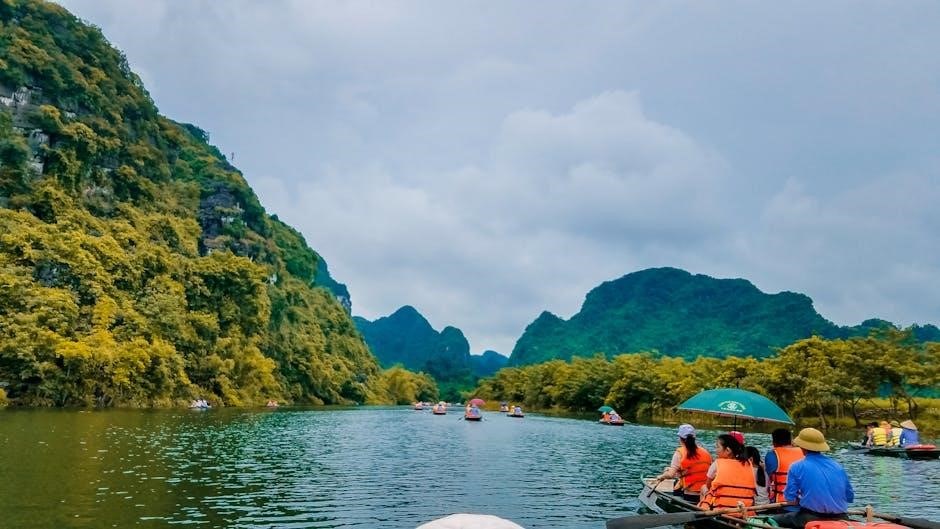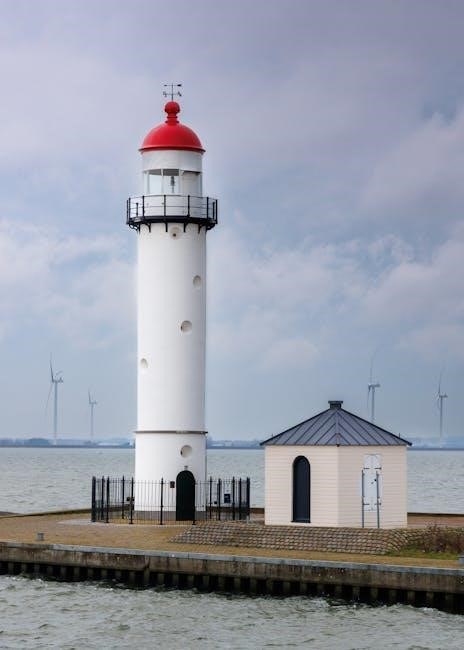mining guide cataclysm
Mining in World of Warcraft: Cataclysm is a vital gathering profession, enabling players to extract ores, gems, and metals, which are essential for crafting and the in-game economy․ With a skill cap of 525, it offers a rewarding path for leveling and supporting professions like Blacksmithing and Engineering․ This guide provides insights into mastering Mining, from leveling strategies to optimal farming routes, ensuring a seamless experience in Cataclysm․
Overview of Mining as a Profession
Mining is a primary gathering profession in World of Warcraft: Cataclysm, allowing players to extract ores, gems, and metals from mineral nodes․ It is a cornerstone of the in-game economy, providing essential materials for crafting professions like Blacksmithing, Engineering, and Jewelcrafting․ With a skill cap of 525, Mining offers a progressive system for players to master, unlocking access to higher-tier resources as they level up․ The profession is straightforward to learn but requires dedication to maximize efficiency․ Mining also plays a critical role in supplying materials for guilds and the broader player base, making it a valuable skill for any aspiring crafter or economy participant․
Importance of Mining in the WoW Economy
Mining is a cornerstone of the WoW economy, providing essential resources for crafting professions like Blacksmithing, Engineering, and Jewelcrafting․ Ores and gems mined are critical for creating weapons, armor, and other vital items, driving demand across the in-game market․ Players and guilds rely on miners to supply materials for gear production and technological advancements․ The profession also fuels the Auction House economy, as mined goods are highly sought after for crafting and resale․ By supplying these resources, miners play a pivotal role in sustaining both individual and guild progress, making Mining indispensable in Cataclysm’s economic landscape․
Getting Started with Mining
To begin mining in Cataclysm, you’ll need a Mining Pick, which can be purchased from a vendor or crafted using Blacksmithing․ Choose a race that offers mining bonuses, such as Dwarves or Gnomes, for a slight advantage․ Start in low-level zones like Durotar or Dun Morogh, where Copper Ore is abundant․ Use your pick to mine nodes, and consider crafting or buying better tools as you progress․ Joining a guild or finding a mentor can also accelerate your learning․ Always keep enough bagspace and use the Auction House to sell surplus materials․ Starting early and consistently mining ensures a strong foundation for higher-level mining and crafting․

Leveling Mining
Leveling Mining in Cataclysm involves progressing from 1 to 525, starting with Copper Ore and advancing through Tin, Silver, and higher-level ores, requiring consistent practice․
Mining Leveling Guide: 1-75
Starting your Mining journey in Cataclysm, focus on Copper Ore, the most accessible mineral․ Begin in starter zones like Durotar or Dun Morogh, where nodes are plentiful․ Use a Mining Pick to gather resources efficiently․ As you progress, transition to Tin and Silver Ore around level 50, found in zones such as The Barrens or Hillsbrad Foothills․ Regularly visit the Auction House to stock up on supplies or sell excess materials․ This foundational phase sets the stage for higher-level ores, ensuring a smooth progression toward mastery of the Mining profession in Cataclysm․
Mining Leveling Guide: 75-150
Reaching level 75 in Mining unlocks the ability to gather Iron and Gold Ore, which are abundant in zones like Arathi Highlands and Stranglethorn Vale․ Continue using your Mining Pick for efficiency․ Iron Ore is a staple for Blacksmithing, while Gold Ore is highly valued for its rarity․ Focus on farming these ores consistently to progress․ Zones such as the Hinterlands and Western Plaguelands also provide ample nodes․ Keep an eye on the Auction House to sell surplus materials․ This phase is crucial for building your Mining skill and preparing for more complex ores like Mithril in the next stages of your journey through Cataclysm․
Mining Leveling Guide: 150-225
At level 150, miners can now collect Mithril Ore, a valuable resource for high-end crafting․ Focus on farming Mithril in zones like the Badlands and Searing Gorge, where nodes are plentiful․ Truesilver Ore also becomes accessible, often found in the same regions․ Use your Mining Pick to gather these ores efficiently․ Mithril is highly sought after for crafting advanced gear, making it a profitable ore to collect․ Continue farming consistently, as this phase lays the groundwork for higher-level ores like Thorium․ Zones such as the Burning Steppes and Searing Gorge remain ideal for this range, ensuring steady progress toward reaching level 225 in Mining․
Mining Leveling Guide: 225-300
Reaching level 225 unlocks the ability to mine Thorium Ore, a highly valuable resource for advanced crafting․ Focus on farming Thorium in zones like Un’Goro Crater and the Burning Steppes, where nodes are abundant․ This ore is crucial for high-end gear and is in high demand․ Additionally, Truesilver Ore remains a viable option, often found in the same regions․ Use your Mining Pick to maximize efficiency and continue farming consistently․ This phase is essential for progressing toward higher-level ores and ensuring a smooth transition to the next stages of your Mining journey in Cataclysm․
Mining Leveling Guide: 300-375
At level 300, players can begin mining Fel Iron and Adamantite, marking the transition into TBC-era content․ These ores are abundant in zones like Hellfire Peninsula, Nagrand, and Blades Edge Mountains․ Fel Iron is a cornerstone for crafting gear for level , while Adamantite is highly sought after for its durability in high-end crafting․ Focus on farming these ores consistently to reach 375․ Utilize your Mining Pick or an Ultimate Gnomish Army Knife for efficiency․ A well-planned route through these zones will ensure rapid progression, making this phase crucial for unlocking the full potential of your Mining profession in Cataclysm․
Mining Leveling Guide: 375-450
Reaching level 375 marks the beginning of mining Obsidian and Elementium Ore, exclusive to Cataclysm․ These ores are crucial for high-end crafting and are found in zones like Mount Hyjal and Deepholm․ Obsidian is sought after for its durability in crafting late-game gear, while Elementium is a key component in advanced Engineering and Jewelcrafting recipes․ To efficiently level from 375 to 450, focus on farming these ores in their respective zones․ Ensure you have a Mining Pick equipped to maintain consistency․ This phase is pivotal for reaching the maximum skill level, making it essential for any serious miner in Cataclysm․
Mining Leveling Guide: 450-525
Reaching level 450 in Mining allows access to the highest-tier ores in Cataclysm, including Obsidian and Elementium․ These ores are found in late-game zones such as Mount Hyjal, Deepholm, and Twilight Highlands․ To level from 450 to 525, focus on farming these ores consistently․ Obsidian nodes are abundant in Mount Hyjal, while Elementium is more common in Deepholm․ Use the Mining Pick for optimal efficiency․ If farming proves time-consuming, consider supplementing with ore purchased from the Auction House․ This final stretch is crucial for achieving maximum mining proficiency and unlocking all Cataclysm-specific ores for crafting and selling․
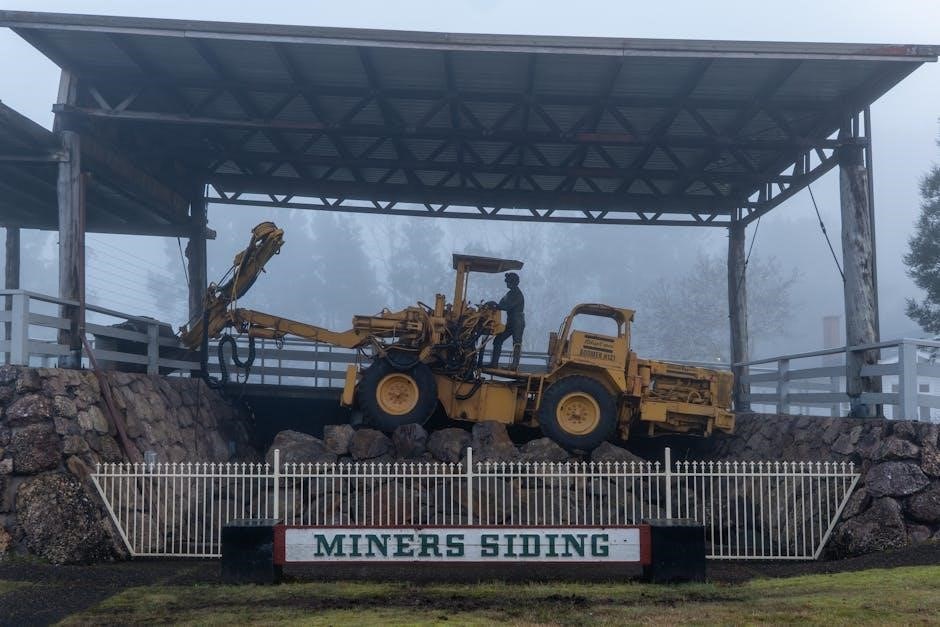
Ores and Gems in Cataclysm
Cataclysm introduces a variety of ores and gems, ranging from Copper to Elementium․ These resources are essential for crafting professions like Blacksmithing and Jewelcrafting, making them highly sought after by players․ Gems, such as Cataclyst and Ember Topaz, also play a significant role in enhancing gear․ Mining these ores and gems requires skill progression and knowledge of optimal farming zones, making them a cornerstone of the in-game economy and character progression․
Copper Ore: Best Farming Routes

Copper Ore is the most accessible mineral in Cataclysm, ideal for early-level mining․ For Horde players, Durotar is a prime location, with abundant nodes along cliffs and hills․ Alliance players should focus on Dun Morogh, particularly along the edge of the mountain near Ironforge․ Both zones offer straightforward routes with minimal competition․ Additionally, Darkshore and the Barrens are excellent alternatives, as they contain numerous Copper Ore nodes․ By following these routes, players can efficiently gather resources and level their mining skill quickly․ These locations are perfect for new miners aiming to progress without hassle․
Tin and Silver Ore: Optimal Locations
Tin and Silver Ore are mid-tier resources in Cataclysm, crucial for crafting and leveling professions․ The best locations for farming Tin and Silver Ore include the Hillsbrad Foothills, Arathi Highlands, and Stonetalon Mountains․ These zones offer abundant nodes, making them ideal for miners․ In Hillsbrad Foothills, focus on the northern areas near the river, while Arathi Highlands’ vast open spaces provide ample opportunities․ Stonetalon Mountains’ rugged terrain also hides numerous nodes․ These locations are perfect for miners seeking to gather resources efficiently and progress their skills without unnecessary competition or travel time․
Iron and Gold Ore: Efficient Farming Spots
Iron and Gold Ore are essential mid-tier resources in Cataclysm, highly sought after for crafting and profession advancement․ The most efficient farming spots for these ores include the Badlands and Western Plaguelands․ In the Badlands, focus on the rugged cliffs and rocky outcrops, as these areas are rich in Iron nodes․ For Gold Ore, the Western Plaguelands’ rolling hills and abandoned mines are ideal․ Both zones offer plentiful nodes with minimal competition, making them perfect for miners aiming to stockpile resources quickly․ By following optimized routes, players can maximize their mining efficiency and progress through higher-level content seamlessly․
Mithril and Truesilver Ore: Advanced Farming
Mithril and Truesilver Ore are mid-to-high-level resources in Cataclysm, crucial for crafting advanced items and supporting professions like Blacksmithing and Engineering․ To farm these ores efficiently, focus on zones such as Searing Gorge and Burning Steppes, where node density is high․ In Searing Gorge, prioritize the rocky terrain and lava flows, as these areas are rich in Mithril․ For Truesilver, Burning Steppes’ vast open spaces and cliffs are ideal․ Both ores require a minimum mining skill of 150 and 165, respectively․ Use a flying mount to cover more ground quickly and consider farming during off-peak hours to avoid competition․ These strategies ensure a steady supply of these valuable resources for crafting or selling on the Auction House․
Thorium Ore: High-Level Farming Strategies
Thorium Ore is a high-value resource in Cataclysm, essential for advanced crafting and sought after by Blacksmiths and Engineers․ To farm Thorium efficiently, focus on zones like Searing Gorge, Burning Steppes, and Silithus․ In Searing Gorge, target the rocky cliffs and cave entrances, as these areas are rich in Thorium nodes․ Burning Steppes’ mountainous regions also yield a high concentration of this ore; A minimum mining skill of 200 is required to extract Thorium․ Use a flying mount to cover large areas quickly and farm during off-peak hours to minimize competition․ These strategies ensure a steady supply of Thorium Ore for crafting high-end items or selling on the Auction House․
Fel Iron and Adamantite Ore: TBC Content
Fel Iron and Adamantite Ore are high-tier resources introduced in The Burning Crusade, now accessible in Cataclysm․ These ores are crucial for crafting high-end items, particularly for Blacksmithing and Engineering․ Fel Iron is commonly found in zones like Hellfire Peninsula and Terokkar Forest, while Adamantite is prevalent in Netherstorm and Shadowmoon Valley․ To farm these ores efficiently, focus on cave systems and rocky terrain․ A Mining Pick is essential, and using a flying mount can significantly speed up your farming process․ These ores remain valuable in Cataclysm, making them a key part of the in-game economy and crafting system․
Obsidian and Elementium Ore: Cataclysm-Specific Ores
Obsidian and Elementium Ore are exclusive to Cataclysm, offering unique crafting opportunities․ Obsidian is found in volcanic zones like Mount Hyjal and Sulfuron Spire, while Elementium is abundant in Deepholm and the Twilight Highlands․ These ores are vital for high-level Blacksmithing and Engineering recipes․ To mine them efficiently, focus on areas rich in volcanic activity and elemental plateaus․ Using a Mining Pick and a fast mount enhances gathering speed․ These ores are highly sought after, making them valuable for crafting and selling on the Auction House, thus playing a significant role in the Cataclysm economy and progression․
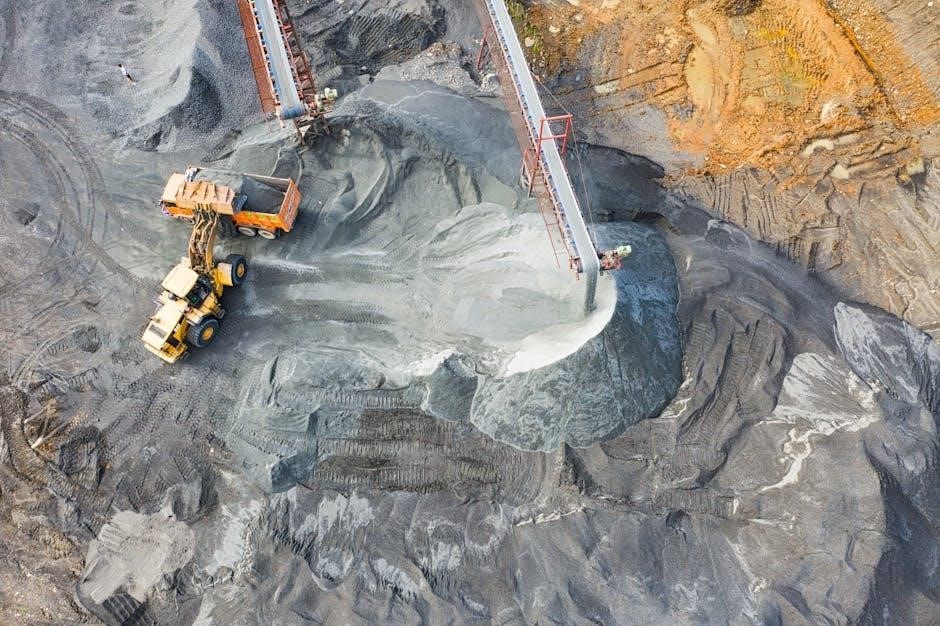
Optimal Farming Routes
Discover the best zones for mining, from starter areas like Durotar to high-level regions like Twilight Highlands․ Efficient routes ensure maximum ore collection and resource accessibility․ Copper, Tin, and Iron are abundant in specific zones, making farming straightforward and profitable for crafting and selling․ Focus on volcanic and elemental-rich areas for rarer ores, optimizing your gathering experience in Cataclysm․

Best Zones for Mining: 1-50
For levels 1-50, focus on zones like Durotar and Dun Morogh, where Copper Ore is abundant․ Horde players thrive in Durotar’s rocky terrain, while Alliance players prefer Dun Morogh’s rolling hills․ Eversong Woods and Tirisfal Glades also offer plentiful Copper nodes․ As you progress, transition to zones like Westfall and Redridge Mountains, where both Copper and Tin can be found․ These areas provide optimal farming routes, ensuring a smooth start to your mining journey in Cataclysm․
Best Zones for Mining: 50-100
For levels 50-100, focus on zones like Hillsbrad Foothills, Arathi Highlands, and The Hinterlands․ These areas are rich in Tin and Silver Ore, with occasional Iron Ore deposits in the higher-level sections․ Horde players benefit from The Hinterlands, while Alliance players find Arathi Highlands particularly rewarding․ Stranglethorn Vale is another viable option, offering a mix of Tin and Silver․ These zones provide dense mining routes, allowing for efficient leveling and resource gathering․ Transition smoothly to higher-level zones as you approach 100 to maintain progress in your mining journey through Cataclysm․
Best Zones for Mining: 100-150
For levels 100-150, focus on zones such as Searing Gorge, Burning Steppes, and Western Plaguelands․ Searing Gorge is ideal for Horde players, offering abundant Iron Ore and Gold Ore deposits․ Burning Steppes is another prime location, rich in Mithril Ore and occasional Truesilver Ore․ Alliance players benefit from Western Plaguelands, which contains dense mining nodes․ Additionally, Badlands is a neutral zone with plenty of ore deposits, making it a great spot for both factions․ These zones provide ample resources to efficiently level your mining skill during this range․
Best Zones for Mining: 150-200
For levels 150-200, focus on zones like Felwood, Winterspring, and Eastern Plaguelands․ Felwood is rich in Mithril Ore and occasional Truesilver Ore, making it ideal for both factions․ Winterspring offers abundant Mithril and Truesilver deposits, with a higher chance of gems․ Eastern Plaguelands is another excellent spot, particularly for Mithril and Truesilver․ Additionally, Eversong Woods is perfect for Blood Elf players, while Ghostlands caters to Horde miners․ Neutral zones like The Hinterlands and Azshara also provide ample mining opportunities․ These zones ensure a smooth and efficient leveling experience for your Mining skill during this range;
Best Zones for Mining: 200-275
For levels 200-275, focus on zones like Hellfire Peninsula, Zangarmarsh, and Nagrand․ Hellfire Peninsula is abundant with Fel Iron Ore, ideal for both factions․ Zangarmarsh offers Fel Iron and Adamantite Ore, with higher node density in certain areas․ Nagrand is excellent for Adamantite, making it a top choice for miners․ Additionally, Terokkar Forest and Blade’s Edge Mountains provide ample Fel Iron and Adamantite deposits․ These zones are optimal for leveling during this range, ensuring a steady supply of resources and efficient skill progression․
Best Zones for Mining: 275-350
For levels 275-350, focus on zones such as Borean Tundra, Howling Fjord, Dragonblight, and Grizzly Hills․ These areas are rich in Cobalt Ore and Saronite Ore, which are essential for high-level crafting․ Borean Tundra and Howling Fjord are particularly good for Cobalt, while Dragonblight offers consistent Saronite deposits․ Grizzly Hills is another hotspot for Saronite, with nodes often found near cliffs and caves․ These zones provide ample resources to level up efficiently and prepare for higher-tier ores like Titansteel․
Best Zones for Mining: 350-425
For levels 350-425, focus on zones introduced in Cataclysm, such as Mount Hyjal, Vashj’ir, Deepholm, and Twilight Highlands․ These areas are rich in Elementium Ore and PYROPE, essential for high-end crafting․ Mount Hyjal offers abundant Elementium deposits, especially near volcanic areas․ Vashj’ir provides nodes along the coastline and underwater ruins․ Deepholm is ideal for mining in its rocky terrain, while Twilight Highlands contains dense node spawns in its mountainous regions․ These zones ensure efficient leveling and prepare you for the final stretch to 525, making them indispensable for serious miners in Cataclysm․
Best Zones for Mining: 425-525
For levels 425-525, focus on the endgame zones introduced in Cataclysm, such as The Jade Forest, Valley of the Four Winds, and Krasarang Wilds․ These areas are rich in Elementium Ore and rare gems like Ember Topaz, crucial for high-level crafting․ The Jade Forest offers dense mining routes, especially in mountainous regions․ Valley of the Four Winds provides scattered nodes, while Krasarang Wilds is ideal for farming near its coastline․ These zones ensure a steady supply of materials and efficient leveling to reach the skill cap of 525, making them essential for mastering Mining in Cataclysm․

Tools and Equipment

A Mining Pick is essential for mining, as it allows players to extract ores and gems from nodes․ Other useful items include the Ultimate Gnomish Army Knife, which can sometimes substitute for a pick, ensuring uninterrupted mining sessions in Cataclysm․
Mining Pick: Essential Tool for Miners
The Mining Pick is a fundamental tool for miners in Cataclysm, enabling the extraction of ores and gems from mineral nodes․ It is the primary instrument required for mining and cannot be substituted for other tools․ Players can purchase a Mining Pick from vendors in major cities or craft one using Blacksmithing․ Equipping a Mining Pick ensures that you can interact with mining nodes effectively․ Without it, mining is impossible, making it indispensable for progressing in the profession․ Always carry a spare pick in case your current one is lost or damaged․ This ensures uninterrupted mining sessions and efficient resource gathering in Cataclysm․
Other Useful Items for Mining
Beyond the Mining Pick, several other items can enhance your mining experience in Cataclysm․ The Ultimate Gnomish Army Knife is a versatile tool that can serve as a backup pick, eliminating the need to carry a spare․ Additionally, items like Mining Gloves or gear with stamina boosts can improve your efficiency and reduce fatigue․ Large bags, such as the Netherweave Bag, provide extra storage for ores and gems, while mounts like the Swiftness Potion or Epics can speed up travel between mining routes․ These items, while not essential, significantly enhance convenience and productivity when farming resources in Cataclysm․
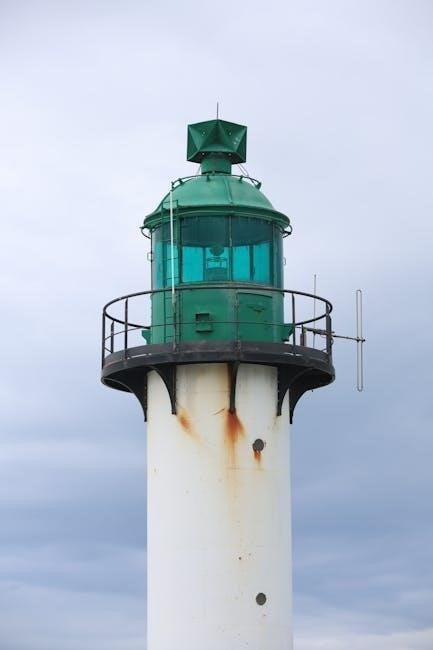
Auction House and Economy
The Auction House is a cornerstone of Cataclysm’s economy, allowing miners to buy and sell ores, gems, and metals․ High demand for these resources drives profitability, making mining a lucrative profession that heavily influences the game’s economy and crafting systems․ Prices fluctuate based on supply and demand, creating opportunities for players to capitalize on their mining efforts and shape the in-game market․ This dynamic system ensures that mining remains a vital and rewarding activity in World of Warcraft: Cataclysm․
How to Use the Auction House for Mining Supplies

Mastering the Auction House is crucial for miners in Cataclysm․ Start by searching for ores, gems, and metals to gauge market demand and prices․ Use the buyout option for quick purchases or set competitive bids to acquire materials cheaply․ Listing your mined resources at optimal times, such as weekends or high-demand periods, ensures higher profits․ Consider bulk posting to attract buyers seeking large quantities․ Additionally, monitor competition and undercut rivals slightly to sell faster․ The Auction House streamlines resource gathering and sales, making it an essential tool for miners aiming to maximize efficiency and profitability in World of Warcraft: Cataclysm․
Profitable Mining Strategies
To maximize profits in Cataclysm, focus on mining high-demand ores like Obsidian and Elementium, crucial for crafting epic gear․ Farm in zones with dense mineral nodes, such as Mount Hyjal and Deepholm, to gather rare materials quickly․ Target Thorium and Fel Iron in high-level zones, as these ores are sought after for endgame crafting․ Monitor the Auction House to identify market trends and list your resources at peak times for higher returns․ Consider farming during off-peak hours to avoid competition․ Additionally, use your Mining Pick and other gear enhancements to increase efficiency․ Selling ores in bulk or directly to crafters can further boost profitability․
Mining in Cataclysm is a rewarding profession, offering valuable resources for crafting and gold-making․ With the right strategies, you can master Mining and thrive in Azeroth’s economy․
Final Tips for Mastering Mining in Cataclysm
To truly excel in Mining, stay updated on market demand and farm accordingly․ Focus on high-demand ores like Obsidian and Elementium for maximum profit․ Always use optimal routes for your level range to minimize travel time and maximize efficiency․ Consider smelting ores into bars for higher gold returns on the Auction House; Join a guild or group to share resources and reduce competition․ Finally, be patient and consistent—mastering Mining in Cataclysm requires time and dedication, but the rewards are well worth the effort․




